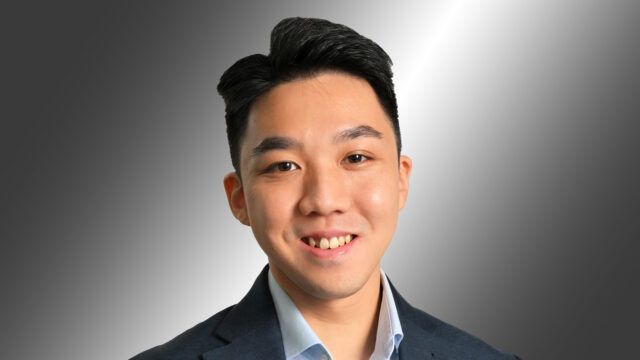
FSA asked Sam Hui, Asia multi-asset analyst at Morningstar, to compare two Asia mixed asset strategies and he selected the First Sentier Bridge A SGD Dist fund and the Schroder Asian Income SGD fund.
| First Sentier | Schroder | |
| Size | SGD 2.94bn | SGD 2.8bn |
| Inception | 2003 | 2011 |
| Managers | Martin Lau, Nigel Foo | Keiko Kondo and team |
| Three-year cumulative return | 0.48% | -0.88% |
| Three-year annualised alpha | -1.20 | -0.97 |
| Three-year annualised volatility | 8.43% | 7.70% |
| Three-year information ratio | -0.25 | -0.25 |
| FE Crown fund rating | * | ** |
| Morningstar rating | **** | *** |
| Morningstar medal | bronze | neutral |
| OCF | 1.39% | 1.44% |
Investment approach
The equity sleeve of the First Sentier strategy is its key performance driver, and our conviction in the equity investment process continues to underpin a process rating of above average, according to Hui (pictured).
Asset allocation is not expected to generate outperformance for this strategy, which targets a fixed 50/50 equity/bond split. The Singapore-domiciled First Sentier Bridge invests in two in-house funds managed by equity manager Martin Lau and bond manager Nigel Foo: FSSA Asian Equity Plus and First Sentier Asian Quality Bond.
“Lau operates with a benchmark-agnostic mindset when constructing his portfolio, so its country and sector exposures can differ substantially from the MSCI All Country Asia Pacific ex-Japan Index.
Instead, Lau and his team seek to identify high-quality companies that can deliver predictable long-term growth at reasonable valuations. They look for competent management teams that can effectively allocate capital and whose decisions are well-aligned with minority shareholders.
“We have confidence in this quality-focused process, which has been consistently applied to generate strong risk-adjusted returns over multiple market cycles,” said Hui.
“The search for quality firms that enjoy Asia’s structural growth tailwinds has also led to a moderate growth tilt,” he added.
Lau has historically favored consumer staples stocks on account of their franchise strength, strong cash flow generations, and steady growth, although he has become more selective in this sector in recent years, citing declining customer loyalty to brands.
He has been adding to financials since 2022, favoring Indian and Southeast Asian banks with strong deposit franchises and growing market shares.
The bond sleeve of the First Sentier fund focuses on hard-currency Asian investment-grade credit and is benchmarked against the JPMorgan Asia Credit Investment Grade Index (hedged to Singapore dollars).
Portfolio duration is expected to be kept within two years of the index’s. The process combines top-down macro analysis and bottom-up credit research. Quarterly committee meetings are held by the Asia fixed-income team to discuss duration strategies and country/sector positioning.
“Under Foo’s watch (since 2012), duration calls have largely been additive to performance, while credit selection results have been mixed,” said Hui.
Geographically, the bond sleeve has exhibited an underweighting in China in recent years, in part owing to the team’s effort to diversify away from the largest country in the index. The team instead found opportunities in Malaysia and the off-benchmark market in Australia.
Turning to the Schroders strategy, Hui noted that Keiko Kondo actively manages the allocation between Asian equity (30%-70%), Asian fixed income (20%-70%), global assets (0-20%), and cash (0-20%) using a combination of derivatives and underlying physical assets.
“The process begins with the strategic investment group–multi asset team, which conducts cross-asset risk-premium research to identify market drivers,” he explained.
Next, the global asset allocation committee, consisting of five voting members including Kondo, consolidates these research findings into asset-class preferences, which guide portfolio positioning.
“Kondo has leveraged this robust framework to make sensible asset allocation and risk management trades over time,” said Hui.
Nevertheless, the equity portion has gone through some changes in recent years. Following stylistic challenges, a benchmark-aware (relative to the MSCI AC Asia Pacific ex Japan Index) equity core sleeve was introduced in late 2020 to supplement the existing dividend-focused equity income sleeve by providing more growth exposure and allowing for more flexibility in navigating different market environments via allocating between the two equity sleeves.
In 2023, the equity income sleeve was restructured to become more tolerant of dividend stocks that are cyclical in nature, which is expected to enhance the income sleeve’s capital growth potential.
The broader investible universe should allow equity manager Manish Bhatia to better utilise analyst recommendations, which are based on a rigorous research framework that has shown success across various Schroders Asian equity offerings, according to Hui
The bond sleeve aims to supplement income while tapering the strategy’s volatility. The Asian credit team has consistently applied the investment process and leverages credit scorecards to construct a hard-currency Asian bond portfolio with a yield similar to or above the JPM Asia Credit Index.
Fund characteristics
Sector allocation:
| First Sentier* | weighting | Schroder# | weighting |
| Financials | 15.3% | Financials | 32.2% |
| IT | 11.7% | Technology | 12.2% |
| Consumer discretionary | 6.3% | Consumer discretionary | 10.7% |
| Comms Services | 5.4% | Global ex Asia | 9.2% |
| Healthcare | 4.4% | Utilities | 8.4% |
| Consumer staples | 3.5% | Communications | 7.5% |
| Industrials | 2.9% | Materials | 4.5% |
| Utilities | 0.5% | Energy | 3.5% |
| REITs | 3.2% | ||
| Industrials | 3.0% | ||
| Real estate | 2.3% |
Country (equity) allocation:
| First Sentier* | weighting | Schroder# | weighting |
| China | 13.9% | China | 9.9% |
| India | 12.4% | Taiwan | 9.3% |
| Taiwan | 6.9% | Australia | 6.6% |
| Singapore | 3.8% | India | 6.6% |
| Hong Kong | 3.0% | Singapore | 4.7% |
| Indonesia | 2.2% | Hong Kong | 4.5% |
| South Korea | 2.0% | South Korea | 3.2% |
| Japan | 1.9% | Japan | 1.7% |
| Australia | 1.1% | Indonesia | 1.0% |
| Thailand | 0.8% | Thailand | 0.4% |
Country (bond) allocation:
| First Sentier* | weighting | Schroder# | weighting |
| China | 11.7% | China | 9.4% |
| Indonesia | 7.9% | Hong Kong | 5.4% |
| Malaysia | 6.2% | India | 5.1% |
| Hong Kong | 5.4% | Australia | 5.0% |
| South Korea | 4.2% | Indonesia | 3.7% |
| India | 3.0% | Japan | 3.4% |
| Singapore | 2.6% | South Korea | 2.8% |
| Australia | 2.4% | Singapore | 0.4% |
| Thailand | 1.8% | Other | -7.4% |
| USA | 1.8% | 0.4% |
Top 5 equity holdings:
| First Sentier* | weighting | Schroder# | weighting |
| HDFC Bank | 4.5% | TSMC | 3.5% |
| Tencent | 4.1% | MediaTek | 2.2% |
| TSMC | 4.1% | Tencent | 1.4% |
| ICICI Bank | 2.4% | CCB | 1.4% |
| OCBC | 2.2% | Hon Hai Precision | 1.3% |
Performance

“The First Sentier strategy has one of the longest track records in the Asia allocation category and has delivered strong returns since its 2003 inception,” said Hui.
He noted that it has comfortably outpaced its average category peer on both an absolute and a risk-adjusted basis over a majority of rolling three- and five-year periods, though slightly lagging its own benchmark, an equal weighted mix of the MSCI AC Asia Pacific ex-Japan and JPMorgan Asia Credit Investment Grade indexes (hedged to Singapore dollars).
“The equity sleeve is the key performance driver here. The equity team’s preference for high-quality companies with defensive characteristics, such as recurring cash flows and strong franchises, tends to offer resilience to the portfolio in periods of market stress,” said Hui.
On the other hand, it is typically disadvantaged during momentum-driven and value rallies, as evidenced by the strategy’s weaker showing in 2020 and 2023.
The First Sentier’s fixed-income sleeve’s investment-grade focus has also historically lent it a defensive tilt compared with its typical category peer, which carries a modest exposure to high-yield debt. The strategy held up better than its rivals in the 2011, 2018, and 2022 down markets.
“However, the fixed-income sleeve’s flexible approach to duration management may increase benchmark-relative interest-rate risks and return volatility,” warned Hui.
Turning to the Schroder strategy, “it has had a solid showing under Keiko Kondo’s watch since September 2021,” said Hui.
Stock selection has been the strategy’s key source of alpha, while credit selection and asset allocation effects tend to be milder.
“But the equity sleeves’ overall dividend bias makes the strategy susceptible to market style rotations,” said Hui. Indeed, the strategy substantially trailed the category benchmark in 2020 when the market hugely favored growth stocks over income stocks. That style preference has reversed since then and boosted the strategy’s performance in 2021 and 2022.
The market favored the income style in 2023, but the strategy was affected by some historical sector biases within the equity sleeves. The overweight in REITs, which was perceived as a defensive sector with stable income, and the underweight of the more cyclical information technology sector particularly hurt; the former faced challenges in this higher interest-rate environment, and the latter rallied on the back of artificial intelligence optimism.
“The team’s bets on China’s reopening through long equity index futures positions in China and Hong Kong also detracted from performance. As a result, both share classes lagged the category index but kept close to the median peer,” said Hui.
Discrete calendar year performance
| YTD* | 2024 | 2023 | 2022 | 2021 | 2020 | |
| First Sentier | 0.67% | 6.78% | -0.89% | -13.84% | 0.68% | 12.11% |
| Schroder | -0.12% | 9.83% | 2.50% | -15.53% | 4.86% | 1.21% |
| Sector | 0.88% | 7.71% | 8.10% | -16.71% | 5.89% | 8.03% |
Manager review
Hui rates that veteran manager Martin Lau as a “best-in-class” equity manager that continues to drive outperformance for the strategy. Lau has led the strategy’s equity sleeve since its 2003 inception.
“During his nearly 30-year career, he has delivered impressive results managing both Asia and Greater China equity mandates,” said Hui. Lau leads a team of 13 investment professionals who have an average of 13 years of investment experience and eight years with the firm.
However, this team saw seven departures in 2024, including four India-focused members, which is significant given India’s growing prominence in the investable universe. The team plans to backfill one Indian equity analyst role, while its generalist approach has facilitated some existing members to step up their India coverage, according to Hui.
For the fixed income sleave, Nigel Foo has been a key decision-maker since October 2012, noted Hui.
He has 27 years of investment experience and is a “skilled rates expert who has served as head of Asian fixed income at the firm since predecessor Jami Grant’s September 2021 departure.”
Co-manager Fiona Kwok joined the firm in 2021 as well, and has 17 years of investment experience with a background in global credit. The managers make up a seven-member Asian fixed-income team that has only two credit analysts.
Meanwhile, the Schroders strategy benefits from experienced investment teams, although the lead manager has a relatively short tenure here.
Keiko Kondo replaced Patrick Brenner as head of multi-asset investments Asia and lead manager of this strategy in September 2021 following Brenner’s relocation to London.
Kondo is a seasoned asset allocator who joined Schroders in October 2017 after spending more than a decade at UBS in various leadership roles. She has 31 years of industry experience and has garnered a solid track record managing multi-asset portfolios.
“We are impressed by Kondo’s cross-asset acumen but would like more time to observe how she delivers given her tenure as the final decision-maker here is still relatively short,” said Hui.
She is part of a well-resourced 11-member Asia multi-asset investment team, and this dedicated asset allocation resource is an advantage of this strategy over peers.
Manish Bhatia manages the underlying equity sleeves and has 30 years of investment experience. “Bhatia is a capable Asian equity investor and has delivered above-median performance across his managed funds. He is backed by a well-resourced 40-strong Asia ex Japan equity analyst team,” said Hui.
Portfolio manager Jian An Huang, who joined the firm in October 2022 and has 14 years of investment experience, now helps with the day-to-day management of the bond sleeve and is expected to become the sole lead in a year or so.
Peng Fong Ng, who has been with the firm for 16 years, continues to provide oversight, and he succeeded Angus Hui as head of Asian credit and bond sleeve manager in June 2022.
“While Ng’s ongoing presence supports continuity, this new squad still needs to settle into its current form,” said Hui.
Fees
The First Sentier fund charges 1.39% for this share class, and the Schroders fund charges slightly higher at 1.44%. However, “both funds’ retail share class fees are reasonable,” said Hui.
Conclusion
Choosing the appropriate strategy depends on the investor’s objective. The First Sentier fund is more suitable for generating total return, while the Schroder fund is best for earning income, according to Hui.
“The Schroder fund performs well when dividend stocks are in demand, while First Sentier, with its growth tilt does better when markets rally,” he said.
The managers of the First Sentier fund have a long-term focus with a low turnover of holdings; the country and sector allocations rarely change.
In contrast, the Schroder fund has greater flexibility because, although it has a bottom-up stock selection process, it can deploy its overlay features, such as ETFs and index futures.
“The fund manager can adjust quicker and take tactical positions efficiently,” Hui said.
Moreover, Schroders take on more risk with allocations to high yield bonds, while First Sentier is more investment grade focused.
Ultimately, Morningstar rates the First Sentier team as above average and the Schroders team as average.
“Martin Lau is highly respected and well-established in Asia; Kendo is a seasoned asset allocator but her tenure in her current role is quite short,” said Hui

















